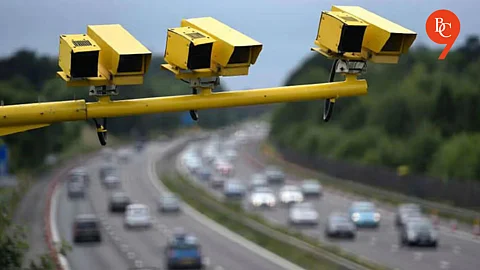Pune’s Mumbai-Pune Expressway Flags 27.76 Lakh Traffic Violations Since ITMS, Most Fines Unpaid
Pune’s Mumbai-Pune Expressway ITMS flagged 27.76 lakh violations in one year, worth ₹470 crore in fines, but only ₹51 crore recovered.
Private cars were the biggest offenders, mainly for over-speeding, followed by heavy vehicles, buses, taxis, and commercial vans.
The ₹100-crore AI-based system uses high-tech cameras and sensors, but officials say fine recovery and driver behaviour remain challenges.
Pune, 11 August 2025: The high-tech Intelligent Traffic Management System (ITMS) on the Mumbai-Pune Expressway has recorded 27.76 lakh traffic violations in its first year, leading to e-challans worth ₹470 crore. However, Maharashtra Transport Department data shows that only ₹51 crore of these penalties have been recovered so far.
Private cars accounted for 17.20 lakh challans, most for over-speeding along the 95-kilometre stretch. Heavy goods vehicles followed with 3.27 lakh notices, buses and other passenger carriers with 2.48 lakh, taxis with 2 lakh, and light commercial vehicles with 1.2 lakh. Medium goods vehicles received 85,468 challans, articulated trucks 30,450, and medium passenger buses 14,764.
Information obtained under the Right to Information Act revealed that ITMS operator Proctech Solutions ITMS LLP earned ₹57.94 crore for processing 8.84 lakh e-challans between July and December 2024. The company is paid ₹654.90 per challan, inclusive of GST, under the contract.
Launched to improve road safety, the ₹100-crore project is funded partly by ₹45 crore from the Road Safety Fund. It uses AI-powered cameras, automatic number plate recognition, speed detection systems, weigh-in-motion sensors, weather monitoring tools, and a central control centre. Forty gantries and hundreds of cameras monitor traffic, with footage reviewed before challans are cleared by regional transport offices.
Over-speeding, not wearing seatbelts, lane indiscipline, wrong-side driving, and mobile phone use are the most common offences. Officials say the Khandala ghat stretch between Lonavala and Khalapur remains a hotspot for speeding despite continuous surveillance.
According to a senior transport officer, the system has improved accuracy and transparency in enforcement, but increasing fine recovery and changing driver behaviour remain major challenges.


